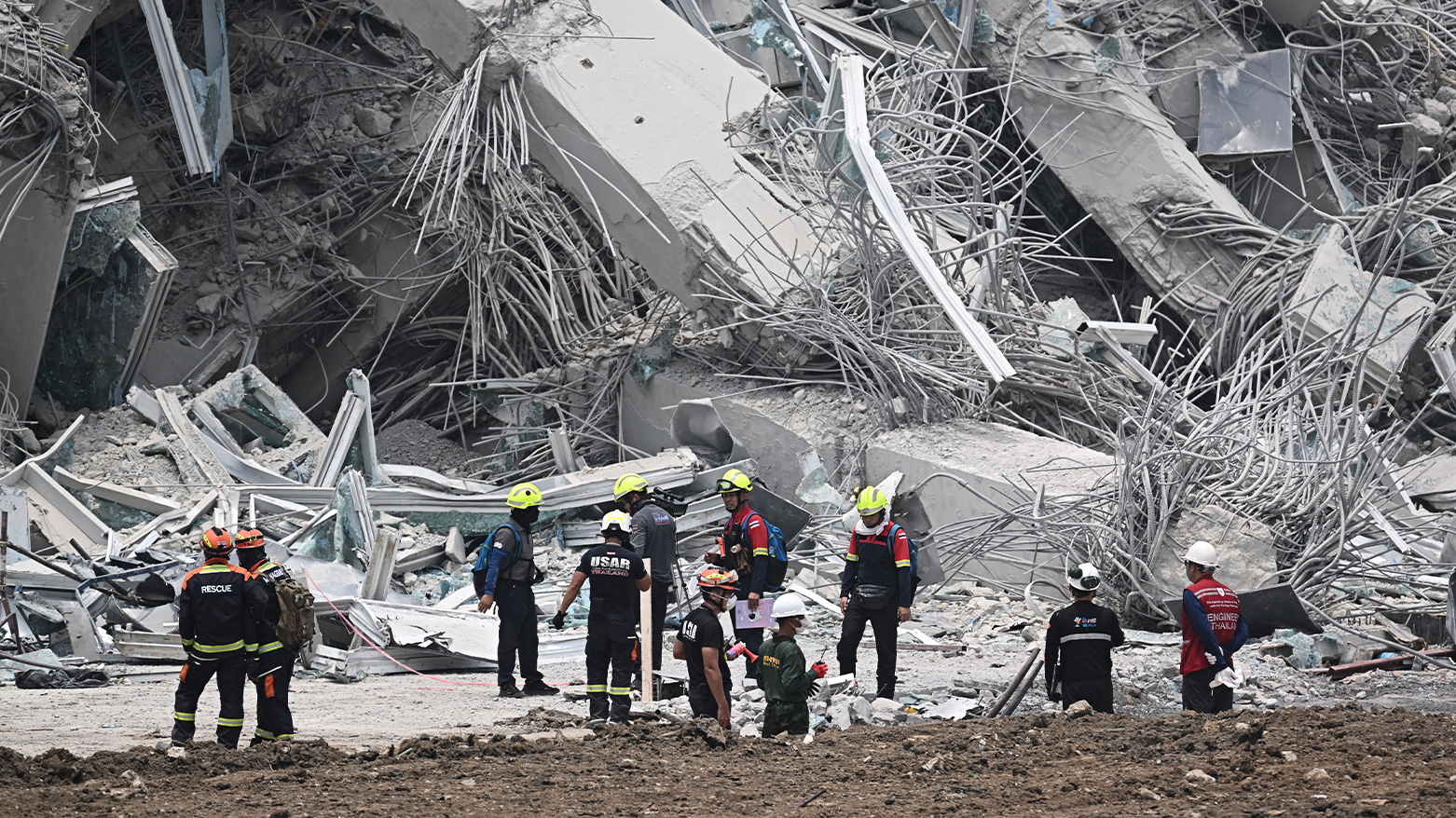Death Toll Tops 1,000 in Myanmar-Thailand Earthquake Disaster
The catastrophe marks one of the deadliest seismic disasters in the region in decades, with devastation stretching from the epicenter near Myanmar's Sagaing region to Bangkok, hundreds of kilometers away.

By Kamaran Aziz
ERBIL (Kurdistan24) — The death toll from a powerful earthquake that struck Myanmar and neighboring Thailand has surged past 1,000, as rescue teams race against time to find survivors beneath the rubble of collapsed buildings.
The catastrophe marks one of the deadliest seismic disasters in the region in decades, with devastation stretching from the epicenter near Myanmar's Sagaing region to Bangkok, hundreds of kilometers away.
The initial tremor, measuring 7.7 on the Richter scale, struck on Friday afternoon northwest of Sagaing in central Myanmar, followed closely by a 6.7-magnitude aftershock. The quakes toppled buildings, shredded roadways, and destroyed infrastructure across central Myanmar, with Mandalay — the country's second-largest city — suffering extensive damage.
Myanmar's ruling military junta reported that at least 1,002 people were confirmed dead and nearly 2,400 injured, warning that the death toll could climb sharply as rescue operations continue. Communication lines remain patchy, and the true extent of the disaster is only beginning to emerge from the conflict-scarred and isolated nation.
Meanwhile, in Bangkok, at least ten people were reported dead following a high-rise building collapse and widespread structural damage.
In Mandalay, centuries-old religious sites were reduced to rubble. A Buddhist monk was killed and others injured when a monastery collapsed. Witnesses described scenes of panic and despair, with many residents sleeping outside for fear of aftershocks.
At Mandalay Airport, operations were suspended after the terminal ceiling caved in, though no casualties were reported there.
Emergency response efforts have been hampered by Myanmar's ongoing civil war, which has crippled public services and healthcare infrastructure. In a rare move, junta chief Min Aung Hlaing issued an appeal for international assistance, acknowledging the unprecedented scale of the disaster. The regime declared a state of emergency in the six hardest-hit regions, and hospitals in the capital, Naypyidaw, resorted to treating patients outdoors due to damage to medical facilities.
The international community has begun to respond. U.S. President Donald Trump announced that Washington would provide emergency aid. India dispatched a relief flight to Yangon carrying blankets, hygiene kits, and food supplies. China sent a rescue team of 82 personnel to assist in recovery operations.
Humanitarian agencies have expressed concern that the country is ill-equipped to cope with a disaster of this magnitude. Even before the quake, over 3.5 million people had been displaced by years of internal conflict, with many already suffering from food insecurity and poor living conditions.
Across the border in Thailand, Bangkok experienced violent tremors that brought down a 30-storey under-construction skyscraper. Rescue teams have confirmed ten deaths so far, with up to 100 workers still missing. The building, located near the bustling Chatuchak market, was turned into a pile of steel and concrete debris.
Bangkok's governor reported the deployment of thermal imaging drones and search teams, stating that signals of life had been detected from at least 15 individuals trapped in the rubble. Over 2,000 damage reports have been filed, prompting city officials to dispatch hundreds of engineers to inspect high-rise buildings for structural integrity. Hundreds of displaced residents spent the night in public parks as their homes were deemed unsafe.
In scenes emblematic of the chaos, rooftop swimming pools in Bangkok sloshed water down glass towers, and hospitals were evacuated. One woman gave birth outdoors after her maternity ward was evacuated, and a surgeon reportedly completed an emergency operation in the open air after evacuating the hospital building.
Thai Prime Minister Paethongtarn Shinawatra made an urgent national address from Phuket on Thursday, ordering the full mobilization of emergency agencies following the powerful quake. The Prime Minister confirmed a building collapse in Bangkok’s Chatuchak district and declared the area an emergency zone. Emergency provisions were extended nationwide to accelerate disaster response.
The government issued SMS alerts and deployed military and medical teams. Thailand’s Ministry of Natural Resources and Environment was instructed to monitor seismic activity, while hospitals and public health services were activated across high-risk areas. Transportation services, including Suvarnabhumi Airport, continued operating under heightened safety protocols.
As both countries assess the aftermath of the quake, the scale of destruction is becoming painfully clear. With continued risks of aftershocks and a death toll expected to rise, regional authorities and international partners face an urgent humanitarian challenge that will demand swift and sustained response.
